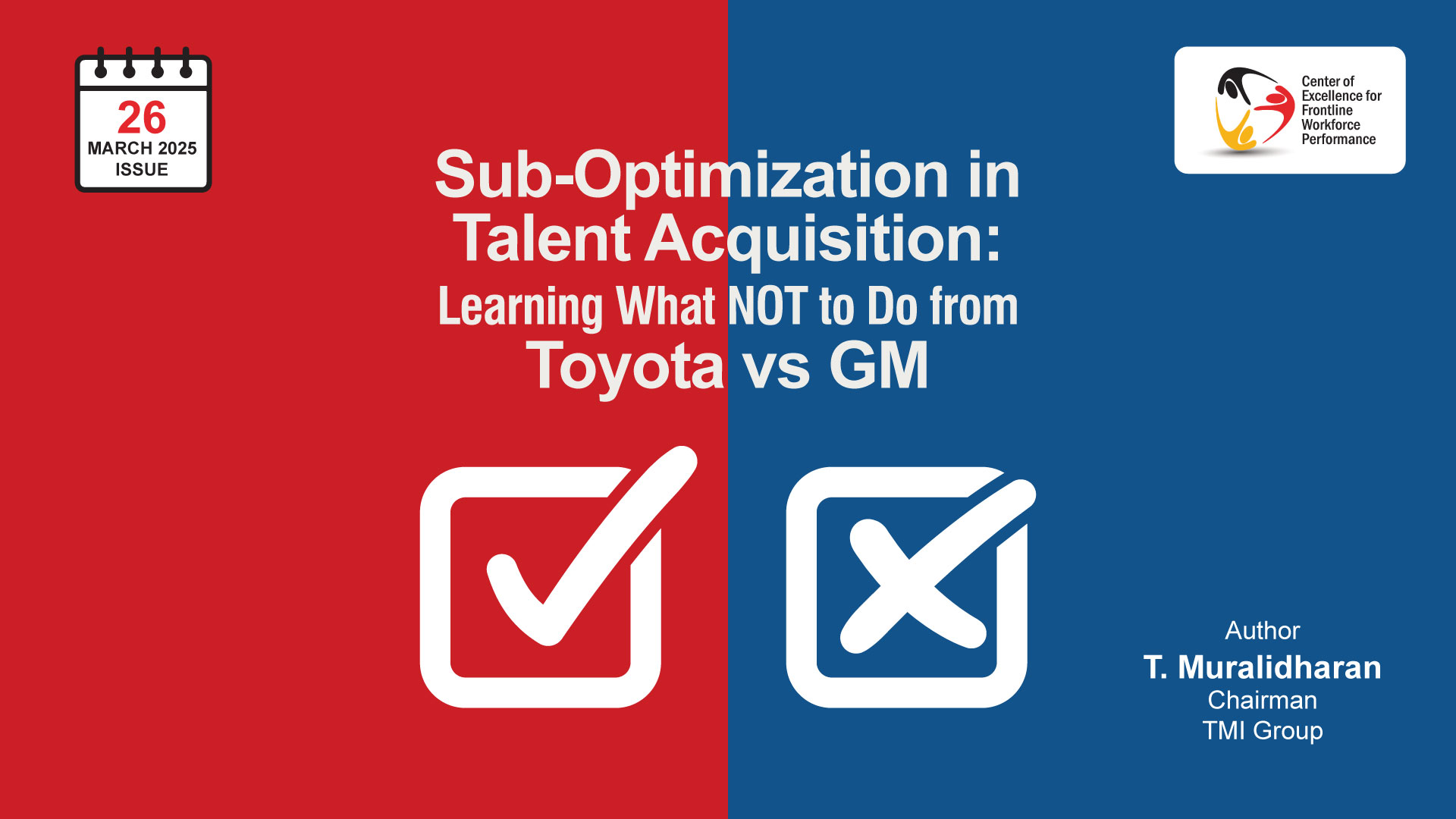
Sub-Optimization in Talent Acquisition: Learning What NOT to Do from Toyota vs GM

Beyond Smiley Sheets: 5 Proven Methods to Measure Corporate Training Effectiveness
In business, it’s tempting to optimize every process, every department, and every metric in isolation—believing that if each part performs well, the whole system will too.
Nothing could be further from the truth.
One of the clearest demonstrations of this fallacy comes not from the HR world, but from the auto industry—specifically the stark contrast between General Motors’ (GM) and Toyota’s approach to manufacturing at the Fremont plant.
The Cautionary Tale: GM Fremont vs Toyota NUMMI
GM Fremont: Optimizing Components, Breaking the System
- Low productivity
- High defect rates
- Toxic labor-management relations
Management’s strategy? They focused relentlessly on optimizing individual components:
- Worker output metrics
- Speed of production lines
- Cost-cutting in isolated departments
Result: Despite hitting individual department targets, the entire system was broken.
Toyota NUMMI: Systemic Optimization, Seamless Success
- Empowered workers: Every worker had authority to stop the production line at the first sign of a defect.
- Cross-functional collaboration: Departments worked together, focusing on end-to-end system performance.
- Respect for people: Employees were treated as problem-solvers, not cogs.
Outcome: Productivity soared, defect rates plummeted, and labor tensions disappeared.
The Relevance for Talent Acquisition
Are we hiring the Toyota way or the GM way?
At first glance, hiring processes in many companies appear efficient:
- Recruitment teams minimize cost-per-hire.
- Onboarding teams maximize completion rates.
- Training teams optimize cost-per-trainee.
Each team hits its KPIs. But the system still fails.
The Solution: Systemic Optimization in Talent Acquisition
Here’s what needs to change:
- Shift from siloed KPIs to metrics that force collaboration.
- Redefine KPIs across recruitment, training, and onboarding teams.
- Focus on performance and retention—not just hiring efficiency.
Conclusion
The HR and Talent Acquisition world in BFSI and similar industries is dangerously close to repeating GM’s mistake—focusing on sub-optimization while the system leaks value.
We must shift to the Toyota Way.
